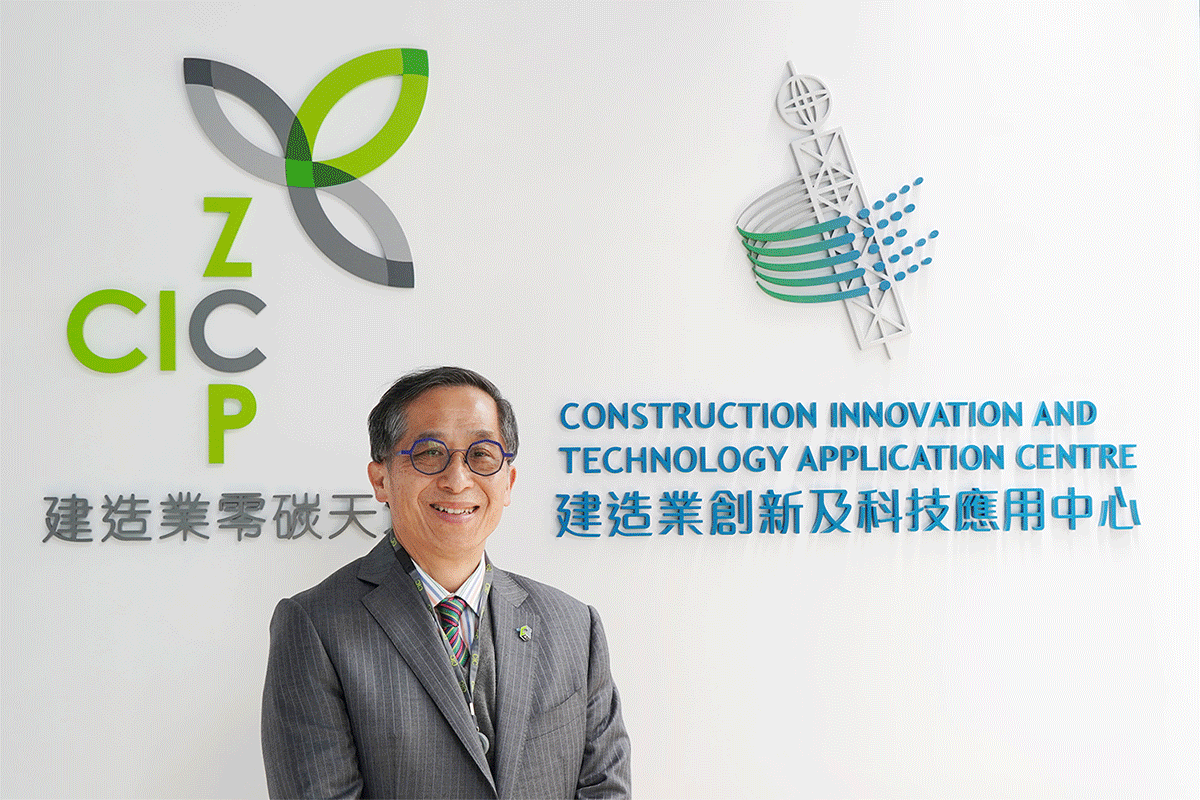2022.03.02
Technology and Upskilling – the ways to go

Ir Thomas HO On-sing (Thomas), who embraces passion and excitement for his big plans ahead, has an unusual start as the chairman of the Construction Industry Council (CIC) during the COVID-19 pandemic in Hong Kong.
New method of construction for productivity and safety
Progress in construction is more or less measured by how quick a project can be completed and how safe the working environment is. Implementation of state-of-the-art building technology could serve both purposes while contributing to carbon neutrality.
“The coming five to fifteen years is a golden period for the construction industry. With over $300-billion-worth construction projects every year, there is huge room for capitalisation for implementation of technology and digitalisation – be it DfMA, BIM, MiC or MiMEP – for better productivity, efficiency and safety,” said Thomas.
Take the “Design for Manufacture and Assembly” approach (DfMA) as an example, where construction is designed for a substantial portion of work to be centralised and conducted off-site. In Singapore, in addition to DfMA, they have implemented Design for Safety in 2016, construction incident fatality has significantly decreased from 26 to 9 per annum, which is a triumphant achievement in workplace safety. Currently, there are 200-300 construction projects in Singapore are DfMA-friendly while only 60-70 projects are so in Hong Kong. “That’s why we have to have to expedite the pursuit of ‘factories’ industrialisation to support more extensive implementation of DfMA.
On the other hand, the adoption of MultiTrade integrated Mechanical, Electrical and Plumbing (MiMEP), for more efficient project management, which in turn expedites the construction process. In fact, CIC’s Construction Innovation and Technology Application Centre (CITAC), which serves as a knowledge hub to leverage the synergies across the construction sectors, holds a key function of facilitating the integration of processes from design, construction, maintenance, testing and commissioning, etc.
Having the industry and our professionals equipped with expertise in extensive technology application, construction projects could only be orchestrated more effectively, conducted more smoothly, and at a more competitive price.
What’s more, a full implementation of all these technologies and initiatives would generate massive amount of data for monitoring, analysis, evaluation and, hence, progression.
Upskill talents and groom the industry
As an executive who received workman-training, Thomas always believes in the importance of having a solid foundation and receiving continuous training.
The Hong Kong Institute of Construction, for example, has been training up our industry professionals, providing latest knowledge in construction, management, safety and sustainability, and especially enabling our professionals to stay competitive amid the trend of digitalisation.
“I wish, one day, the construction industry could become an ‘industry of choice’ that is highly sought after by talents.”
“To do this, we could, first, consider to introduce a ‘master worker’ career ladder just like ‘master chef’ in the catering industry. Our ‘master’ should possess excellent basic skills which enables him or her to innovate smarter ways of work and solve problems with creativity and practicality. Second, digitalisation is certainly helping. Imagine if you see a workman tapping on a tablet when working on a project rather than handling pieces of paper – isn’t the former much cooler?” said Thomas.
Connect Hong Kong with other cities
As more Hong Kong construction professionals and companies emerge to the Guangdong-Hong Kong-Macao Greater Bay Area (GBA) to embrace opportunities, the CIC as the industry front has kept abreast of the trend and continuously offered support to members in the GBA cities, such as liaising with authorities between cities, professional bodies and contractors in cities such as Shenzhen, about difficulties encountered by Hong Kong business starters. It is the CIC’s responsibility to act as a communications bridge between industry individuals and other industry associations, if not government, of other jurisdictions, aiding and smoothing out collaborations.
Going forward, as the CIC establishes a foothold in other GBA cities, more inter-city professional exchange will become possible, levelling up the professionality of the industry.
Empower the industry and people
Plenty of opportunities upcoming, Thomas is optimistic about empowering the industry and professionals in a way that could expedite the progression.
Look ahead, Thomas aspires to bring the industry together to a more united front, and to advance the overall standard of construction in Hong Kong, bringing pride to individual and corporate members.
“We all have a role to play in bringing the industry forward. Every step counts so let’s get going!”
